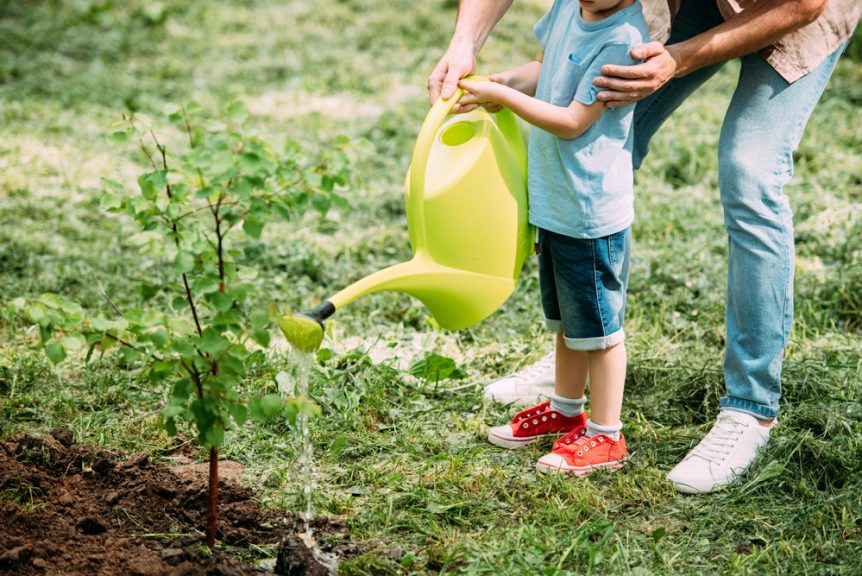
Tree Care Experts in Atlanta, Georgia, Share Tips on Planting & Caring For Newly Planted Trees
You’ve chosen the right species, selected the perfect spot, and planted your new tree. That was the easy part. Here’s where it gets tricky. Whether it’s a baby seedling or your local nursery’s most stout four-foot sapling, proper watering is crucial to the survival of your new tree. Insufficient water can cause problems, but overwatering can be even worse, and is a very common mistake for those new to tree care.
Read on to learn how to properly care for your freshly planted tree and how to find the ideal watering regimen that will keep it healthy and thriving for years to come!
Proper Care Is Essential for New Trees
The first two years after planting are the most difficult for a young tree, as it is struggling to establish roots in the new environment. It will be especially susceptible to heat, drought, and competition for nutrients from surrounding vegetation such as grass and weeds. This is why it’s so important to keep a close eye on your tree during this time.
Watch for signs that your tree is stressed. These include:
- Wilted, scorched, or curling leaves
- Premature autumn coloration
- Dying branches
In the hot summer months, these signs could simply mean increasing the water supply, but they may also be symptoms of transplant shock.
Managing Shock When Tree Transplanting
Trees undergo a great deal of stress when they’re transplanted, whether they’re young saplings from a nursery or long-standing sentinels moving from your front lawn to your backyard. Most trees lose a significant portion of their root system in the transplanting process andhave to start fresh with very little.
Recovery from transplant shock is no easy task, particularly for the young tree. Fortunately, there are a few things you can do to help your shocked tree back to health and prevent symptoms from appearing at all.
New Tree Watering Routine and Best Care Practices
One way to help your newly planted tree is to add a layer of mulch in about a two-foot radius around the trunk (leave about 3 inches of space between the mulch and the base of the trunk to prevent suffocation). This insulates the soil from excessive heat or cold, helps retain moisture, and discourages weed growth. Wood chips or bark nuggets are great for this purpose. Be careful not to lay it on too heavy, though. Too much mulch may create a soggy environment which fosters unwanted fungi and stifles the roots; a layer about two to four inches thick is ideal.
Make sure the roots are getting ample oxygen and moisture by watering deeply and consistently. A good system for how often to water new trees should look something like this: Water once per day for the first two weeks after planting, then once per week for the next month. Once every one or two weeks should be adequate for the rest of the first year. Naturally, you’ll need to increase the frequency of your watering days during hot, dry periods and reduce the frequency during rainy periods.
If the soil around your tree is moist at a depth of about 6 inches, you’re in good shape. If it’s turning into a swamp, you’ll want to slow down to avoid overwatering. If your tree continues to show signs of stress or is developing other symptoms indicative of damage or disease, such as dying branches, the best course of action is to get in touch with professional arborists in your area. They can recommend and implement preventative measures for your specific situation so you and your trees can remain stress-free.
About Boutte Tree, Inc.
Boutte Tree has been proudly serving Atlanta, Georgia, since 2003. They are certified Master Arborists by the ISA and accredited by the TCIA. They are dedicated to safety, environmental responsibility, and outstanding service, and they’ve got the awards to prove it.
